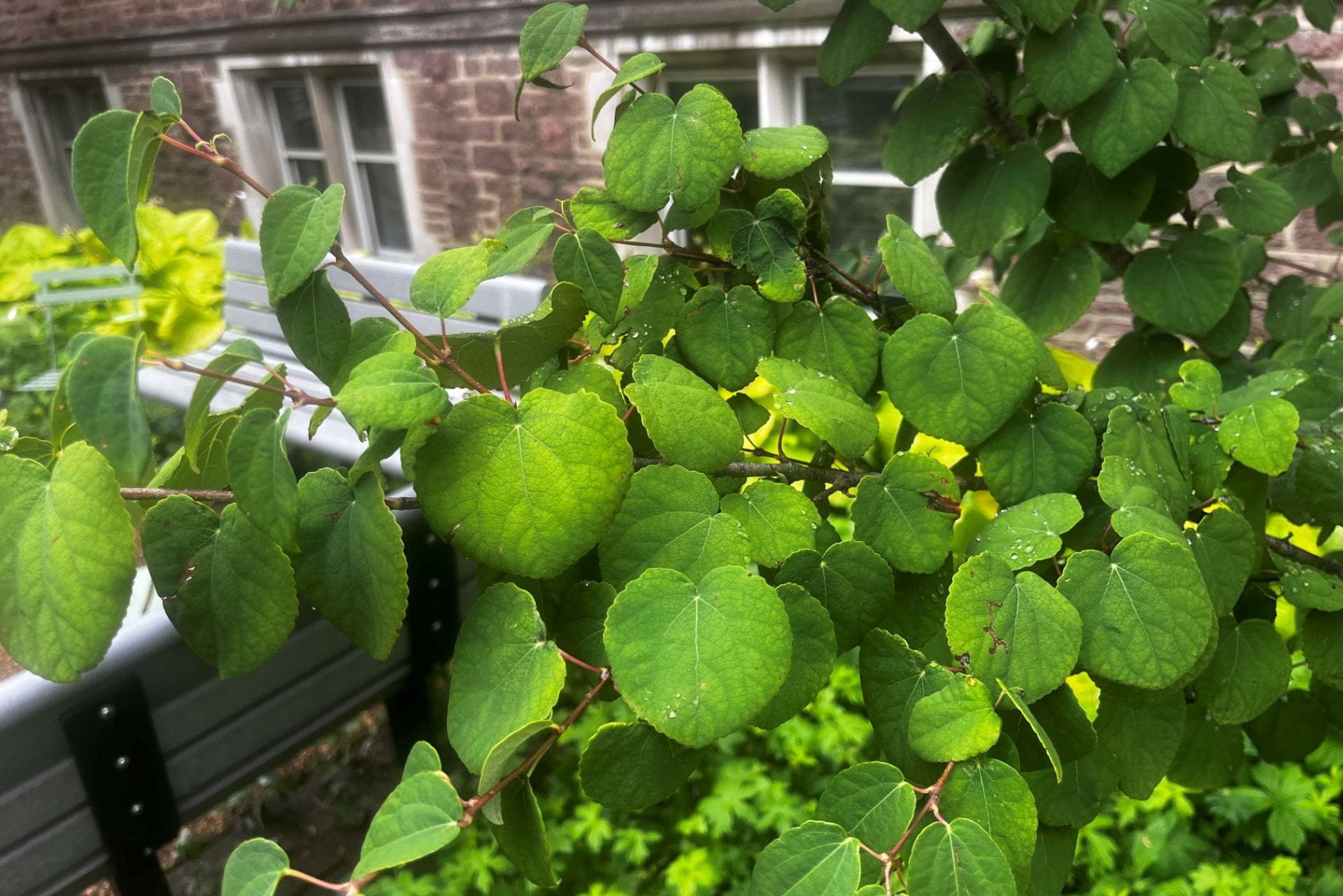Katsuratree
Arbor Walk #106, Treekeeper ID #5947

The Katsuratree’s native range in Japan and China. The ‘Rotfuchs’ cultivar is most commonly cultivated in the United States. In cultivation it can grow to 60′ tall and is noted for its beautiful shape and attractive foliage. Leaves emerge a deep burgundy color in the spring, fade to a bluish-green in the summer and turn gold, orange, and red. Fallen leaves sometimes have the smell of cinnamon, burnt sugar, or ripe apples. It is best adaptable to well-drained soil in full to part shade conditions and sited in a location protected from strong winds and hot late afternoon sun. It has little tolerance for drought conditions.
| Common Name | Katsuratree |
|---|---|
| Latin Name | Cercidiphyllum japonicum |
| Indigenous Name(s) | |
| Cultivar/Variety | ‘Rotfuchs’ |
| Commercial Name | RED FOX |